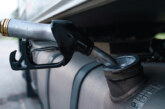
Andrew Goddard, Chairman of the UK industry body the Verification of Lubricant Specifications (VLS), spoke to CVW about the recent changes to European lubricant specifications.
When selecting the right oil to use in a customer engine, the ACEA sequences is an important piece of information. These ACEA sequences identify relevant performance standards for lubricants, specifically tailored to the European market, based on the type of engine – usually the ‘A’ series of gasoline or petroleum engines and the ‘B’ series for diesel engines, including light vans. Both these ‘A’ and ‘B’ sequences are designed for vehicles not fitted with exhaust after treatment devices.
For vehicles that are fitted with either a catalytic converter or diesel particulate filter, the ‘C’ sequences apply where ‘C’ represents catalyst compatible. So a typical series of sequences might be ACEA A3/B4 or ACEA C3. The exact combination of letters will depend on the engine’s specific requirements and for heavy commercial diesel engines then the ACEA ‘E’ series applies.
Regular reviews
ACEA reviews the sequences regularly to ensure they remain in line with lubricant product and OEM development. Lubricants marketers have been blending to ACEA sequences produced in 2016, but after work began in 2018, the new automotive engine oil sequences for light-duty vehicles have now been released in 2021. ACEA usually release new sequences for both light and heavy and duty engines at the same time, but for the 2021 sequences, only the light-duty categories have been published so far.
According to ACEA, the new sequences have been released to address engine developments that are being driven by a combination of regulatory and performance needs, complemented by necessary test maintenance requirements. Many of the changes are due to a change to engine tests as old models become obsolete and new models are released onto the market. The Mercedes-Benz (MB) MB271 engine, used in the ACEA 2020 sequences to test for black sludge, was first launched in 2009 before being withdrawn from the market in 2015. MB’s OM646LA, used to test for diesel engine wear, was similarly produced between 2002 and 2010. The new sequences must use engines currently in production, so changes have to be made.
The new ACEA 2021 sequences represent evolution, not revolution. The light-duty sequences for 2021 tackle some existing challenges in the marketplace such as the introduction of a new category A7/B7 and C6 addressing the impact of Low Speed Pre- Ignition (LSPI). The introduction of new engine tests modernises the sequences to take account of the need for lower viscosity fluids in some engines such as the introduction of the Toyota engine test. A first for ACEA in introducing a Far Eastern manufacturer engine in what is essentially a European set of oil standards. They also withdraw legacy engines that are no longer representative of the overall market.
Generally, the solution to the LSPI problem has involved low SAPS oils, so it will be interesting to see how much interest there will be in the A7/B7 sequence, which is a high-SAPS sequence. The C6 sequence additionally uses a new fuel economy test capable of evaluating fuel savings with very low viscosity oils from OW-20 down to 0W-8.
What changes have been made?
Two categories have been withdrawn from the 2021 sequences; A3/B3, which can now be covered by A3/B4 and C1, which now has a very low number of applications.
New claims can already be made against the 2021 oil sequences, which will become mandatory for all new claims from 1 May 2022 onwards. This allows the industry some crossover period, to manage existing stocks in the supply chain.
The lubricants industry still awaits the 2021 sequences for heavy-duty engines, which ACEA expects to publish later this year. Some inside the industry believe that whilst there was the hope of a summer release, the end of the year is a more realistic time frame.
New categories E8 and E11 are likely to be introduced, replacing E6 and E9. These upgrades will focus on enhanced oxidation performance and piston cleanliness with the inclusion of established ASTM engine tests developed for API CK-4. Two new categories for fuel efficiency, F8 and F11, are also expected, though the industry may have to wait even longer for these F sequences to be introduced.








